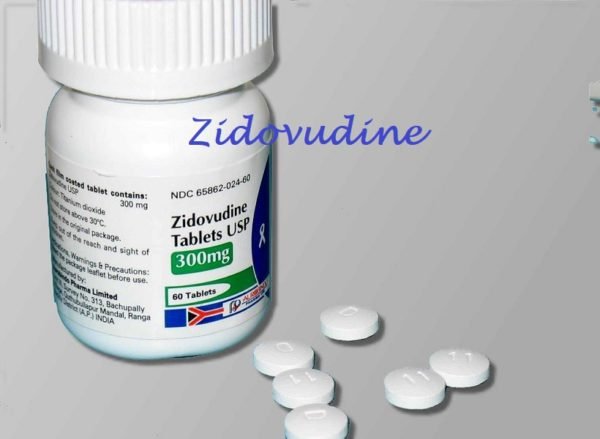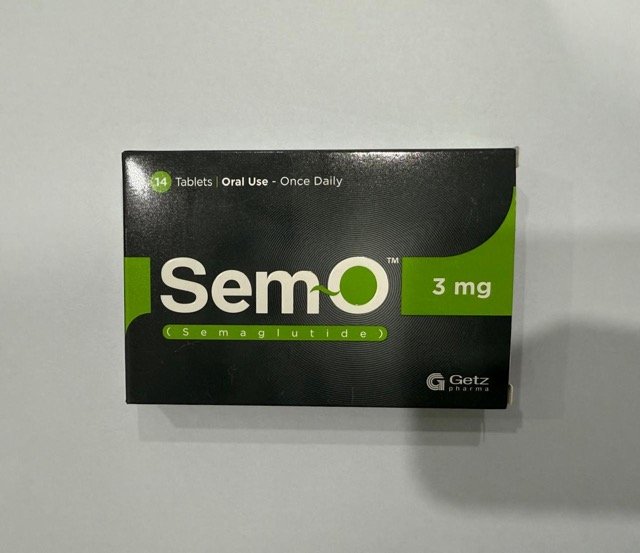Zidovudine is an antiviral medicine that inhibits the replication of the HIV virus by inhibiting viral RNA dependent DNA polymerase.
It is used in the following situations:
-
HIV-1 infection:
-
It is used in the treatment of HIV-1 infection along with other antiretroviral agents
-
-
Perinatal HIV-1 transmission:
-
It is used in the prevention of mother to fetus HIV-1 transmission
-
-
Off Label Usage of Zidovudine in Adults:
-
HIV-1 nonoccupational postexposure prophylaxis
-
Zidovudine Dose in Adults
- Patients should receive Intravenous therapy only until oral therapy can be administered.
Dose in the Prevention of perinatal HIV transmission:
- Zidovudine should be given by continuous IV infusion near delivery in the following cases:
- in women with known or suspected HIV RNA >1,000 copies/mL
- Unknown HIV RNA status
- Use may be advised in women with HIV RNA between 50 and 999 copies/mL.
- Oral zidovudine should be discontinued during intrapartum IV infusion if the patient was receiving oral therapy previously.
- Other antiretroviral agents should be continued orally.
- Zidovudine IV is not used in women receiving combination antiretroviral therapy who have HIV RNA <50 copies/mL near delivery and there are no worries related to adherence to the regimen.
-
Intravenous (preferred route):
- During labor and delivery:
- A loading dose of 2 mg/kg is given
- It is followed by a continuous IV infusion of 1 mg/kg/hour until clamping of the umbilical cord.
- For scheduled cesarean delivery, IV zidovudine is started 3 hours before surgery.
- In cases of unscheduled cesarean delivery, consider giving the loading dose then proceeding to delivery.
- During labor and delivery:
-
Oral (if Intravenous, not possible):
- A loading dose of 600 mg, then 400 mg every 3 hours.
-
Dose in the treatment of HIV-1 infection:
- 300 mg orally BID daily
- 1 mg/kg/dose Intravenous administered every 4 hours around-the-clock (6 doses daily)
- It is used in combination with other antiretroviral agents.
Off Label Dosage in the treatment of HIV-1 nonoccupational postexposure prophylaxis
Oral:
-
CrCl ≥60 mL/minute:
- Zidovudine is not given
-
CrCl <60 and ≥15 mL/minute:
- 300 mg twice daily with other antiretroviral agents.
- Initiate therapy within 72 hours of exposure and continue for 4 weeks.
-
CrCl <15 mL/minute:
- Adjust dose based on renal function along with other antiretroviral agents. I
- initiate therapy within 72 hours of exposure and continue for 28 days
Zidovudine Dose in Childrens
Dose in the treatment of HIV-1 infection:
-
Infants (born at or near term ≥35 weeks postconception, and PNA ≥4 weeks) weighing ≥4 kg, Children, and Adolescents:
- The 3-times-daily dosing is approved by the FDA but rarely practiced
- Twice daily dosing is recommended in the current pediatric HIV guidelines.
-
Weight-directed dosing:
-
4 to <9 kg:
- 12 mg/kg/dose orally twice daily or 8 mg/kg/dose 3 times daily.
-
9 to <30 kg:
- 9 mg/kg/dose orally twice daily or 6 mg/kg/dose 3 times daily.
-
≥30 kg:
- 300 mg orally twice daily or 200 mg 3 times daily.
-
-
-
Body Surface Area-directed dosing:
- 240 mg/m /dose every 12 hours,
- Range is 180 - 240 mg/m² /dose every 12 hours(Maximum dose is 300 mg/dose) or
- 160 mg/m /dose every 8 hours
- Maximum dose is 200 mg/dose.
Note: Use the Intravenous route only until oral therapy can be administered:
-
Infants ≥3 months and Children:
- 120 mg/m² /dose I/V QID
- The maximum dose given is 160 mg/dose
-
Adolescents ≥30 kg:
- 1 to 2 mg/kg is given Intravenous every 4 hours around the clock
Dose in the prevention of HIV-1 perinatal transmission:
- Dosing targets completion of courses started at birth
- If the neonate is diagnosed as HIV positive then stop empiric dosing and transition to a treatment regimen and monitoring.
- The duration of zidovudine, in general, is 6 weeks, although it is variable, and depends on additional antiretrovirals, risk of transmission, serology testing, and chosen strategy.
-
Infants born prematurely (GA <35 weeks):
- Neonatal; standard infant doses may be excessive in infants who were born prematurely.
-
Infants <6 weeks (GA ≥35 weeks)
-
Weight-directed dosing:
- 4 mg/kg/dose orally every 12 hours.
-
Fixed weight-band dosing regimen:
- 2 to <3 kg: 10 mg orally given every 12 hours.
- 3 to <4 kg: 15 mg orally given every 12 hours.
- 4 to <5 kg: 20 mg given every 12 hours.
-
- 3 mg/kg/dose Intravenous can be given if oral therapy intolerable every 12 hours.
Dose in the treatment of HIV-1 nonoccupational postexposure prophylaxis:
- Initiate therapy within 3 days of exposure
- Continue for 28 days & use it in combination with other antiretroviral agents.
-
Infants (PCA ≥35 weeks and PNA ≥4 weeks of age) and Children:
- 4 to <9 kg: 12 mg/kg/dose given orally twice daily.
- 9 to <30 kg: 9 mg/kg/dose given orally twice daily.
- ≥30 kg: 300 mg given orally twice daily.
-
Adolescents:
- 300 mg orally twice daily.
-
Dosing adjustment for hematologic toxicity:
- Stop if foolowing occurs :
- Significant anemia (Hgb <7.5 g/dL or >25% decrease from baseline)
- Significant neutropenia (ANC <750 cells/mm or >50% decrease from baseline)
- The dose may be restarted when bone marrow recovers using appropriate adjunctive therapy (eg, epoetin alfa).
- Stop if foolowing occurs :
Pregnancy Risk Factor: C
- Zidovudine crosses the human placenta
- Zidovudine is metabolized by the placenta to its active metabolite.
- There has not been an increase in overall birth defects risk after first-trimester exposure.
- Preterm births are more likely with maternal antiretroviral treatment (ART). However, stillbirths are possible. Low birth weight and gestational age can increase the chances of preterm delivery.
- It is important to continue maternal ART and not withhold it.
- All infants who have been exposed to antiretroviral medication should be followed up for a long time.
- The use of nucleoside-reverse transcriptase inhibitors, or NRTI (Nucleoside Reverse Transcriptase Inhibitors) can lead to lactic acidosis or hepatic steatosis due to mitochondrial toxicity.
- NRTIs are generally well tolerated, and the potential risks of their use outweigh the benefits.
- Zidovudine is an alternative NRTI to HIV-infected pregnant women, according to the Health and Human Services (HHS), Perinatal HIV Guidelines.
- antiretroviral-naive,
- People who have received antiretroviral treatment in the past and are now starting again
- Patients who are unable to tolerate or respond poorly to the current treatment.
- Patients who are trying to conceive.
- Females who get pregnant while taking zidovudine may continue using it if the viral suppression is successful and the regimen is well tolerated.
- Adjustment is not required.
- Zidovudine is recommended in combination with lamivudine by the Health and Human Services (HHS), Perinatal HIV Guidelines. This is to be used as a replacement NRTI backbone in starting treatment in pregnant women who are antiretroviral-naive.
- Zidovudine should always be administered IV at delivery to females who have HIV RNA levels greater than 1,000 copies/mL. This includes females who are known or suspected to have HIV RNA levels above 1000 copies/mL.
- All pregnant women with HIV should receive ART to lower their viral load and reduce the chance of perinatal transmission.
- Monitoring during pregnancy is more common than monitoring in adults who are not pregnant.
- The ART can be modified after delivery, but should not be stopped after delivery.
Use Zidovudine while breastfeeding
- Breast milk contains Zidovudine.
Zidovudine dose in renal disease:
-
CrCl ≥15 mL/minute:
- No dosage adjustment required.
-
CrCl <15 mL/minute:
-
Manufacturer’s labeling:
- 100 mg orally given every 6 to 8 hours
-
Alternate dosing:
- 100 mg orally given 3 times daily or 300 mg once daily (HHS [adult] 2017)
- 1 mg/kg Intravenous every 6 to 8 hours
-
-
ESRD on intermittent hemodialysis (IHD) (administer dose after dialysis on dialysis days):
-
Manufacturer’s labeling:
- 100 mg orally given every 6 to 8 hours
-
Alternate dosing:
- 100 mg orally given 3 times daily or 300 mg once daily (HHS [adult] 2017)
- 1 mg/kg Intravenous given every 6 to 8 hours
-
-
Peritoneal dialysis (PD):
- 100 mg orally given every 6 to 8 hours
- 1 mg/kg Intravenous given every 6 to 8 hours
-
Continuous renal replacement therapy (CRRT):
- No adjustment required
Zidovudine dose in liver disease:
- There are no specific dosage adjustments given in the manufacturer's labeling (has not been studied).
- However, the adjustment may be required due to extensive hepatic metabolism.
Common Side Effects of Zidovudine Include:
-
Central Nervous System:
- Headache
- Malaise
-
Dermatologic:
- Skin Rash
-
Gastrointestinal:
- Nausea
- Anorexia
- Vomiting
-
Hematologic & Oncologic:
- Macrocytosis
- Anemia
-
Hepatic:
- Hepatomegaly
-
Respiratory:
- Cough
-
Miscellaneous:
- Fever
Less Common Side Effects of Zidovudine Include:
-
Cardiovascular:
- Cardiac Failure
- ECG Abnormality
- Edema
- Left Ventricular Dilation
-
Central Nervous System:
- Hyporeflexia
- Irritability
- Nervousness
- Chills
- Fatigue
- Insomnia
- Neuropathy
-
Endocrine & Metabolic:
- Weight Loss
- Increased Amylase
-
Gastrointestinal:
- Diarrhea
- Constipation
- Stomatitis
- Abdominal Cramps
- Abdominal Pain
- Dyspepsia
- Increased Serum Lipase
-
Genitourinary:
- Hematuria
-
Hematologic & Oncologic:
- Lymphadenopathy
- Neutropenia
- Splenomegaly
- Thrombocytopenia
-
Hepatic:
- Increased Serum Aspartate Aminotransferase
- Increased Serum Alanine Aminotransferase,
-
Neuromuscular & Skeletal:
- Asthenia
- Arthralgia
- Musculoskeletal Pain
- Myalgia
-
Otic:
- Ear Sign Or Symptom
-
Respiratory:
- Nasal Congestion
- Rhinorrhea
- Abnormal Breath Sounds
- Wheezing
Side effects (Frequency not defined):
-
Local:
- Injection site reaction (IV)
- Irritation at the injection site (IV)
- Pain at the injection site (IV)
Contraindication to Zidovudine Include:
- Hypersensitivity to zidovudine, or any component of the formulation, could be life-threatening
- Hemoglobin 7.5g/dL or neutrophil count 750/mm (4.65 mmol/L).
Warnings and precautions
-
Hematologic toxicities: [US Boxed Warning]
- Use of advanced HIV-1 disease has been associated with hemomatologic toxicities, such as neutropenia, severe anemia and even severe anemia.
- The duration of the use and the amount of bone marrow reserves may influence the severity of toxic effects.
- Hemoglobin loss can be seen as soon as 2 to 4 weeks after treatment. Neutropenia usually takes place between 6 and 8 weeks.
- Pancytopenia can be seen (usually reversible).
- Patients with bone marrow impairment (granulocytes 1,000 cell/mm or hemoglobin >9.5 g/dL) should be cautious.
- Keep track of your blood pressure
- Patients with anemia or neutropenia may need to be dose interrupted.
-
Immune reconstitution syndrome:
- The immune reconstitution syndrome can occur in patients who have received HIV treatment.
- This may lead to an inflammatory response to an indolent, residual opportunistic virus.
- Further evaluation and treatment may be necessary.
-
Lactic acidosis/ hepatomegaly:
- With nucleoside analogs, severe hepatomegaly and steatosis with lactic acidosis have been reported. Some cases even proved fatal.
- Obesity or female obesity may increase the risk.
- Stop treatment for any patient with clinical or laboratory findings suggesting lactic acidosis, hepatotoxicity or transaminase elevation (hepatomegaly or steatosis may or may not be associated).
-
Lipoatrophy
- It can cause subcutaneous fat loss, particularly in the face, legs, and buttocks.
- The severity and incidence of lipoatrophy are affected by cumulative exposure. They may not be reversible.
- After switching to a regimen without zidovudine, improvement can take several months or years.
- Monitor patients for signs of lipoatrophy and consider switching to a non-zidovudine-containing regimen if lipoatrophy occurs.
-
Myopathy
- Myopathy and myositis can be caused by prolonged use.
- The pathological changes that are observed are similar to those caused by HIV-1.
-
Hepatic impairment
- Patients with hepatic impairment might have higher serum levels, which could increase the risk of hematologic toxicities.
-
Renal impairment
- Patients with CrCl >15 mL/minute should be cautious; dosage adjustment is recommended.
|
Acemetacin |
May enhance the adverse/toxic effect of Zidovudine. Specifically, the risk for hematologic toxicity may be increased. |
|
Acyclovir-Valacyclovir |
May enhance the CNS depressant effect of Zidovudine. |
|
Chloramphenicol (Ophthalmic) |
May enhance the adverse/toxic effect of Myelosuppressive Agents. |
|
CloZAPine |
|
|
Dexketoprofen |
May enhance the adverse/toxic effect of Zidovudine. |
|
Fluconazole |
May decrease the metabolism of Zidovudine. |
|
Ganciclovir-Valganciclovir |
May enhance the adverse/toxic effect of Zidovudine. Specifically, hematologic toxicity may be enhanced. |
|
Interferons |
May enhance the adverse/toxic effect of Zidovudine. Interferons may decrease the metabolism of Zidovudine. |
|
Levomethadone |
May increase the serum concentration of Zidovudine. |
|
Mesalamine |
May enhance the myelosuppressive effect of Myelosuppressive Agents. |
|
Methadone |
May increase the serum concentration of Zidovudine. |
|
Nitisinone |
May increase the serum concentration of OAT3 Substrates. |
|
Orlistat |
May decrease the serum concentration of Antiretroviral Agents. |
|
Probenecid |
May decrease the metabolism of Zidovudine. |
|
Promazine |
May enhance the myelosuppressive effect of Myelosuppressive Agents. |
|
Protease Inhibitors |
May decrease the serum concentration of Zidovudine. |
|
Raltegravir |
May enhance the myopathic (rhabdomyolysis) effect of Zidovudine. |
|
Rifamycin Derivatives |
May decrease the serum concentration of Zidovudine. Exceptions: Rifabutin. |
|
Tenoxicam |
May enhance the adverse/toxic effect of Zidovudine. |
|
Teriflunomide |
May increase the serum concentration of OAT3 Substrates. |
|
Valproate Products |
May increase the serum concentration of Zidovudine. |
|
Risk Factor D (Consider therapy modification) |
|
|
Clarithromycin |
May enhance the myelosuppressive effect of Zidovudine. Clarithromycin may decrease the serum concentration of Zidovudine. Management: Monitor response to zidovudine closely when used with clarithromycin, and consider staggering zidovudine and clarithromycin doses when possible in order to minimize the potential for interaction. |
|
DOXOrubicin (Conventional) |
|
|
DOXOrubicin (Liposomal) |
May enhance the adverse/toxic effect of Zidovudine. DOXOrubicin (Liposomal) may diminish the therapeutic effect of Zidovudine. |
|
Ribavirin (Oral Inhalation) |
Zidovudine may enhance the adverse/toxic effect of Ribavirin (Oral Inhalation). Specifically, the risk/severity of anemia may be increased. Management: Due to significantly increased risk of anemia, consider even closer monitoring for anemia than routinely recommended. Alternative therapies should be considered when clinically possible, particularly for patients with other risk factors. |
|
Ribavirin (Systemic) |
Zidovudine may enhance the adverse/toxic effect of Ribavirin (Systemic). Specifically, the risk/severity of anemia may be increased. Management: Due to significantly increased risk of anemia, consider even closer monitoring for anemia than routinely recommended for ribavirin. Alternative therapies should be considered when clinically possible, particularly for patients with other risk factors. |
|
Tolvaptan |
May increase the serum concentration of OAT3 Substrates. |
|
Risk Factor X (Avoid combination) |
|
|
Amodiaquine |
Zidovudine may enhance the neutropenic effect of Amodiaquine. |
|
BCG (Intravesical) |
Myelosuppressive Agents may diminish the therapeutic effect of BCG (Intravesical). |
|
Cladribine |
May enhance the myelosuppressive effect of Myelosuppressive Agents. |
|
Cladribine |
Agents that Undergo Intracellular Phosphorylation may diminish the therapeutic effect of Cladribine. |
|
Deferiprone |
Myelosuppressive Agents may enhance the neutropenic effect of Deferiprone. |
|
Dipyrone |
May enhance the adverse/toxic effect of Myelosuppressive Agents. Specifically, the risk for agranulocytosis and pancytopenia may be increased |
|
Stavudine |
Zidovudine may diminish the therapeutic effect of Stavudine. |
Monitor:
- CBC with differential (more frequent monitoring required in patients with poor bone marrow reserve)
- LFTs
- serum creatinine
- HIV viral load and CD4 count.
How to administer Zidovudine?
- Give orally without regard to meals.
Intravenous:
- Avoid rapid infusion or bolus injection.
- Do not administer IM.
- Infuse over 1 hour
- in pregnant women, infuse loading dose over 1 hour followed by continuous infusion.
Mechanism of action of Zidovudine:
- Zidovudine, a thymidine analogue, interferes with HIV's RNA-dependent DNA polymerase and inhibits viral replication.
- It inhibits nucleoside reverse transcriptionase.
Absorption: Oral:
- Well absorbed
Distribution:
- Significant penetration into the CSF
V :
- 1 to 2.2 L/kg
Protein binding:
- 25% to 38%
Metabolism:
- Mainly Hepatic via glucuronidation to inactive metabolites, including GZDV; extensive first-pass effect
Bioavailability: Oral:
- Similar for tablets, capsules, and syrup
- Neonates <14 days: 89%
- Infants 14 days to 3 months: 61%
- Infants 3 months to Children 12 years: 65%
Half-life elimination: Terminal:
- Premature neonate: 6.3 hours
- Full-term neonates: 3.1 hours
- Infants 14 days to 3 months: 1.9 hours
- Infants 3 months to Children 12 years: 1.5 hours
- Adults: 0.5 to 3 hours (mean 1.1 hours)
Time to peak, serum:
- 30 to 90 minutes
Excretion:
- Oral: Via Urine (72% to 74% as metabolites, 14% to 18% as unchanged drug)
- IV: Via Urine (45% to 60% as metabolites, 18% to 29% as unchanged drug)
International Brands of Zidovudine:
- Adovi
- Antivir
- Aviral
- Avirzid
- Azidomine
- Kedu
- Latus AZT
- Retrovir
- Retrovir AZT
- Retrovir-AZT
- Revodine
- Timivudin
- Zidic-C
- Zidin
- Zido-H
- Zidomat
- Zidovir
- Zydowin
- ALTI-Zidovudine
- APO-Zidovudine
- NOVO-AZT
- Retrovir
Zidovudine Brands in Pakistan:
Zidovudine [Syrup 50 mg/5ml] |
|
| Zeedo | Hilton Pharma (Pvt) Limited |
Zidovudine [Tabs 300 mg] |
|
| Zivod | Mass Pharma (Private) Limited |
Zidovudine [Caps 100 mg] |
|
| Zeedo | Hilton Pharma (Pvt) Limited |
| Zidovir | A. J. Mirza Pharma (Pvt) Ltd |



.jpeg)



